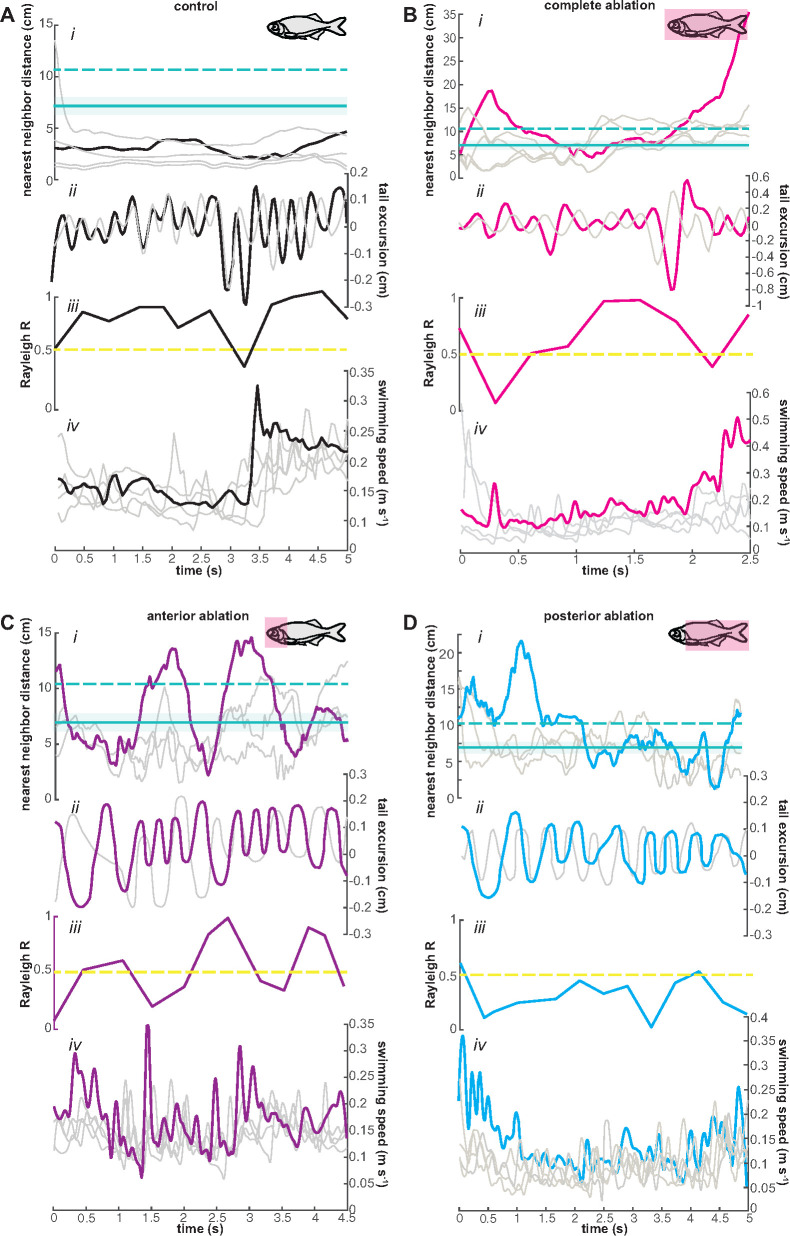Fig. 4.
Differences in schooling behavior when major regions of the lateral line are ablated. Representative trials showing (i) nearest neighbor distance, (ii) tail excursion phases, (iii) tail beat by tail beat R coefficient with synchrony threshold of 0.5 (dashed yellow line), and (iv) swimming speed. (A) Pretreatment fish (control) usually stay within the school and have higher tail beat synchrony. Dashed green line represents the in-school threshold distance and the solid green line with the shaded error region represents the mean body length of giant danios (BL = 7.24 ± 1.12). The tail beat frequency increases as fish swim in and out of the school. (B) Treated fish with their lateral line system completely ablated usually stay within the school, but sometimes swim away from the school and have some trouble with tail beat synchronization. (C) Treated fish with anterior lateral line ablation swims in and out of the school and loses tail beat synchrony. Fish with posterior lateral line ablation have trouble synchronizing their tail beats.

